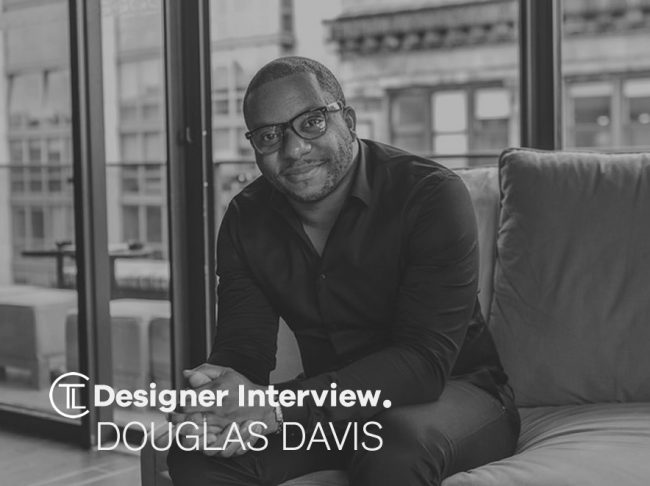
Brooklyn-based Douglas Davis enjoys being one of the variety of voices needed in front of and behind the concept, marketing plan, or digital strategy. His approach to creativity combines right-brained creative problem-solving with left-brained strategic thinking. The unique mix of creative strategy, integrated marketing, and art direction is what Douglas brings into the classroom. Douglas began his teaching career as an adjunct in tandem with his professional career, following in the footsteps of his mentors at Pratt Institute who worked during the day and taught at night.
Designer Interview With Douglas Davis @DouglasQDavis #designerinterview #LogoDesign #Branding #DesignThinking
https://t.co/qKvLJC70EM pic.twitter.com/ZcxvoNFoKD
— The Logo Creative™ (@thelogocreative) February 21, 2018
Currently, he is an associate professor in the Communication Design department at New York City College of Technology in Brooklyn.
Douglas is a former adjunct professor at New York University in the Master’s in Integrated Marketing program and current adjunct associate professor at City College in the Branding and Integrated Communications (BIC) program. As a HOWDesign university contributor, his ideas have been presented in webinar, conference, and course format. His online class, Creative Strategy and the Business of Design, has been well received by a mix of creative professionals practicing in the United States and beyond. He is also the Author of the book Creative Strategy and the Business of Design

Digital Marketer, Freelance Art and Creative Director, Advertising & Design Educator . . . who depends on what day.
In 2011 Douglas founded The Davis Group LLC and continues to offer strategic solutions to client branding, digital, and design problems. In addition to client work and giving back in the classroom, Douglas was appointed to serve on the advisory board for New York City’s High School for Innovation in Advertising and Media (iAM). His advertising and academic experience aided him in authoring the four-year curriculum for the first public advertising high school in the country. Following the launch of iAM, Douglas contributed as an education consultant for the launch of the Manhattan Early College School for Advertising (MECA).
Douglas holds a BA in Graphic Design from Hampton University, an MS in Communications Design from Pratt Institute, and an MS in Integrated Marketing from New York University.
The Logo Creative – Thanks for agreeing to take part in our designer interviews it’s great to have you onboard.
Douglas Davis – Hi Andrew Thanks for asking I’m honored to be featured among the great designers you have lined up. I learned about myself doing this interview so I hope it helps others in our profession. Thanks so much for the opportunity.
The Logo Creative – What was the turning point in your life when you decided to become a designer and how did you proceed?
Douglas Davis – It’s funny Andrew because, though it was a turning point, it wasn’t a conscious decision. I couldn’t see that far back then and here’s what I mean. I’m not sure whether it is socio-economic status or what, but my family and I had no idea that there was a career making design decisions. It’s crazy now looking back and knowing that every experience from the cradle to the grave is designed, and yet until someone identifies and places design on your radar, you’d have no idea it exists even though you’re surrounded by it. So the turning point for me was when I was introduced to design by process of elimination. The small public schools I went to had excellent art programs and when I was accepted to Hampton University, I intended to major in Fashion Merchandising, but that lasted all of the six hours it took us to drive from my home town in Lexington, South Carolina. When I went to registration and learned that program was phased out, I thought to myself I’ll major in graphic design because I didn’t know what that was.
The Logo Creative – What does your day consist of?
Douglas Davis – Depends on what day. I wake up juggling because I like to keep a lot in the pipeline but my day consists of maintaining and building relationships in between writing, teaching and speaking engagements. So a lot of back and forth on social media with students and designers who’ve purchased the book to say thanks. More back and forth through email to follow up with clients, submit articles and lock in conferences before heading to teach communication design students at New York City College of Technology, Pratt or grad students at City College. Again, depending on the day, I could be doing some of this in another country or heading to a boxing, writing or stand-up comedy class. I’m gonna Die Empty like Todd Henry.
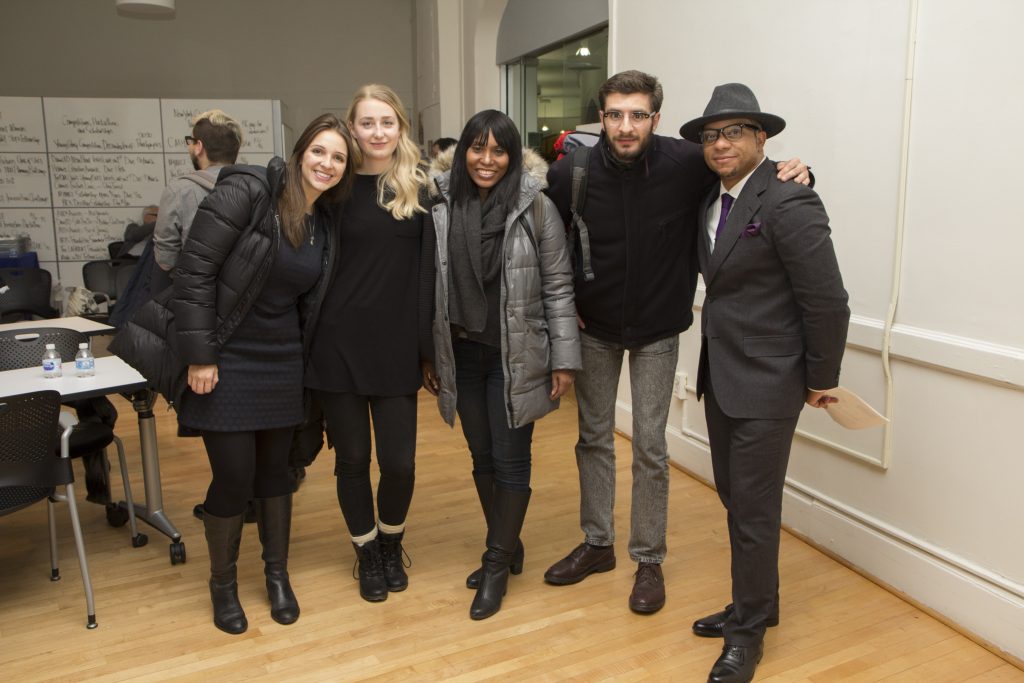
Table of Contents
Douglas with his Branding and Integrated Communications Grad students
The Logo Creative – Are you a morning person or night owl and is there a reason why?
Douglas Davis – I have no idea if there’s oxygen on the earth before 9am. So, yeah it’s dangerous waking up too early.
The Logo Creative – What was the first logo you ever designed?
Douglas Davis – So I split this into my first Identity, my first for a brand and my first freelance.
First Logo for myself
I learned so much about myself digging around in my Time Capsule backups, digging through job folders and old resumes to triangulate the timeline. So my first logo/identity was my own (pictured below in print) and I can trace that back to 1999. My jobs at Juno Online Services (99’-00’) & CondeNet (02’-03’) were designing digital ads, banners and gifs so that digital influence of the profession combined with my typographic education from Pratt. The mark was a flexible system in that on my first flash website, each section of the site, about, digital, logos, posters etc. was integrated with my name as pictured below and the animation would ease in to construct or deconstruct in different configurations. It worked horizontal or vertical and really loved this typographic integrated dictionary concept. I still live in Brooklyn, though not at that address, that’s still my number though the email address is no longer in use (and my name is still Douglas of course).

First Logos for a brand
It wasn’t until 2004 that I really started designing logos for Essence Magazine branded events (03’-05’) the master brand. I’m not sure which of these were first because they were all 2004.
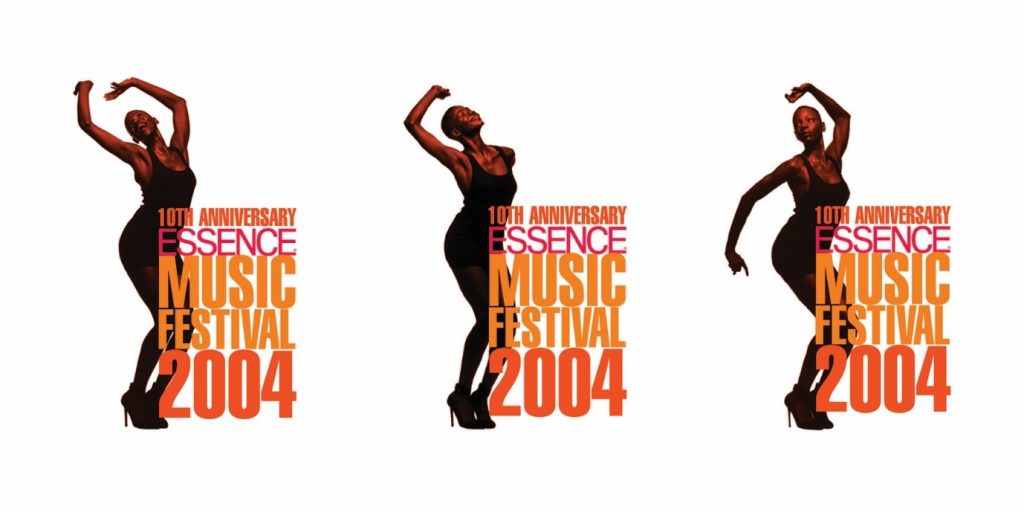


First Freelance Logos
Below were my first Freelance Logos. Most of them were for free. My roommate in Pratt, Nikhil Baveja was my first business partner, this industrial designer did custom furniture or interiors and I did the branding. 1. This mark has two lc letter “I’ but only one dot that has been substituted with a screw. Our First paid collaboration was 2. The Vinnies Styles boutique and their Branding, bags, tags and website. 3. My friend Carla went to Fashion Institute of Technology in Manhattan and started her new line inspired by a melange or mix of refined aspirational elements and streetwear. She spelled it Maylange and I wove together a custom tailored a mix of Din and a rustylooking Spencerian Style. 4. A unique family history needed to be reflected in the mark they commissioned. Unlike most African-American families, this one could trace their heritage back to the 18th Century. So I played around with the way old gravestones used to make certain characters smaller and place lines or dots under them.
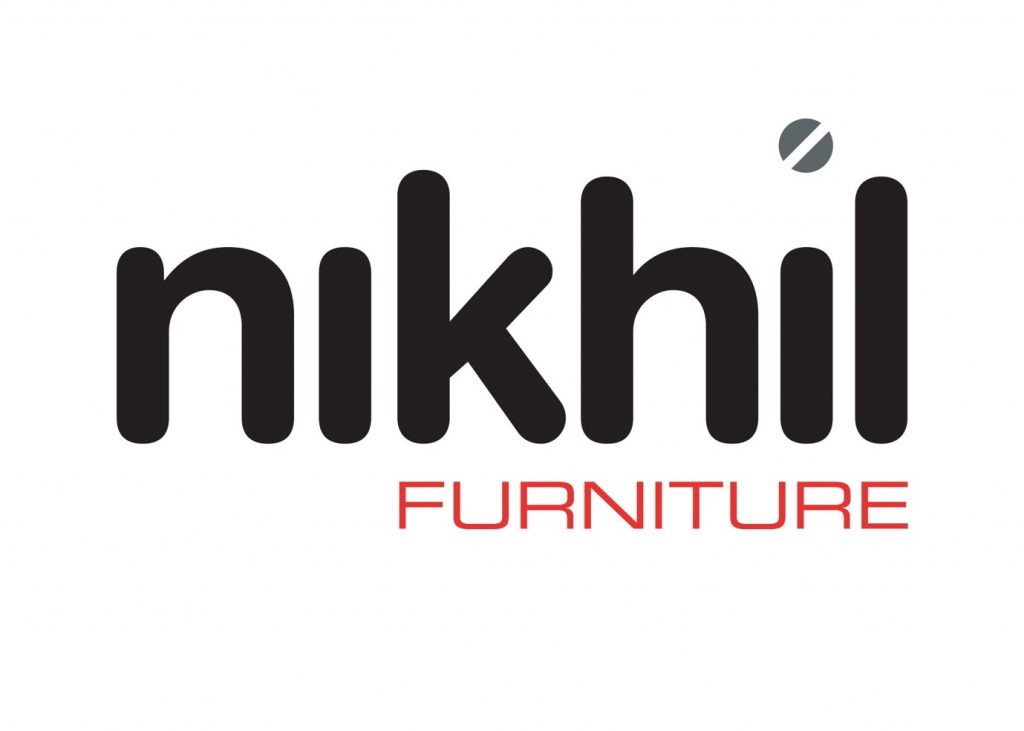
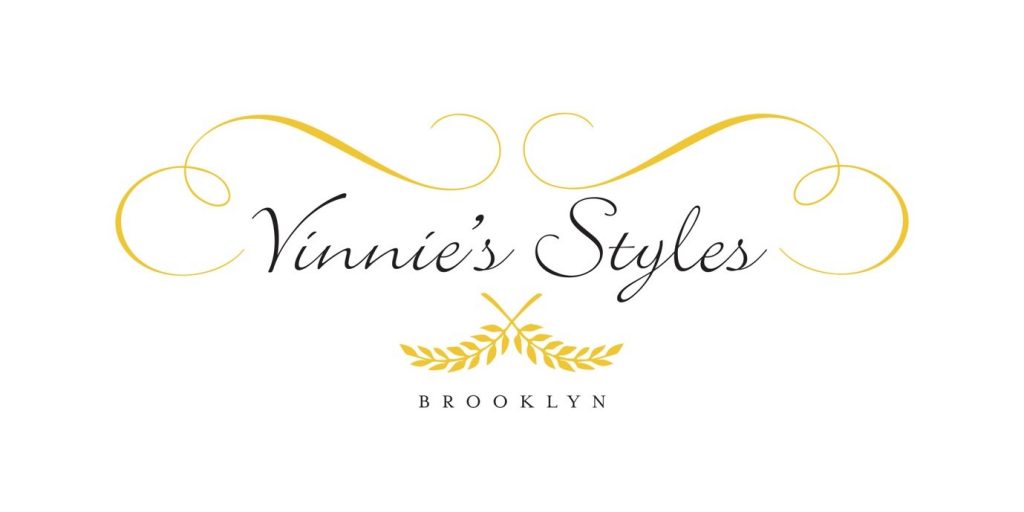
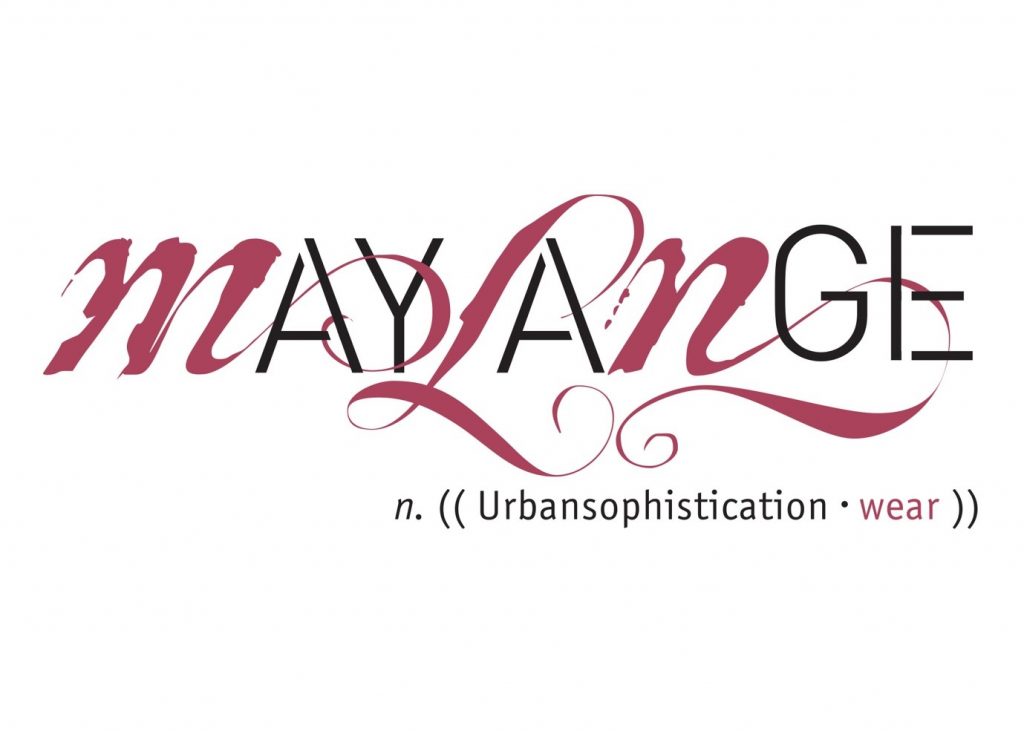
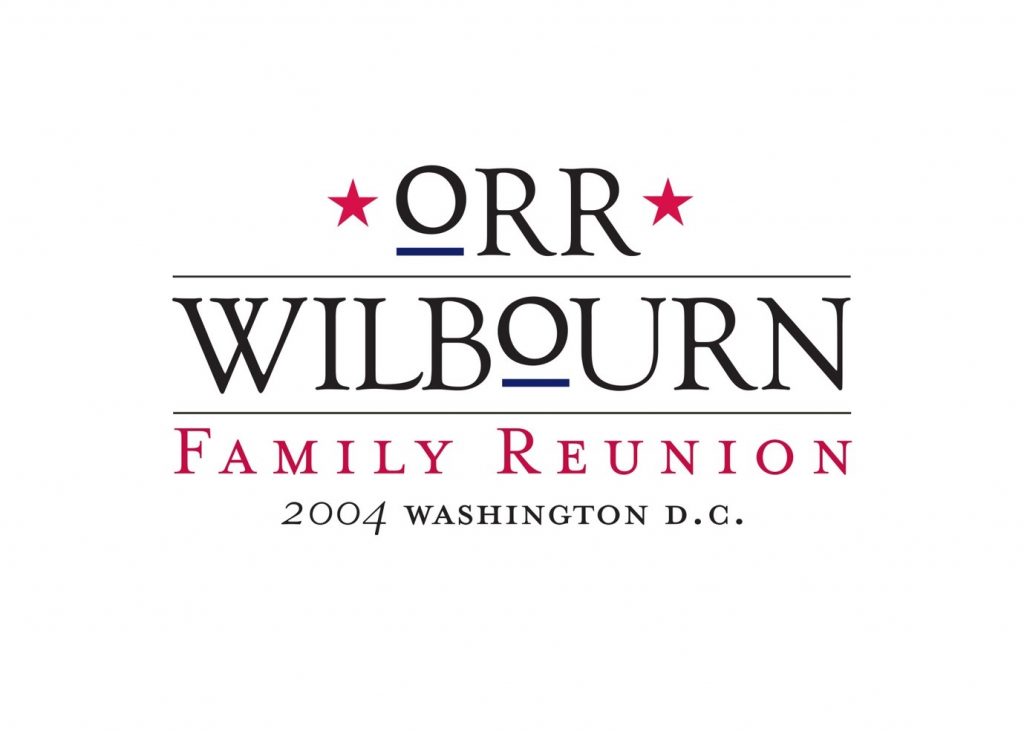
The Logo Creative – What is your favourite Logo you have designed?
Douglas Davis – I looked back at my body of work to answer this but of the three I considered, I think The Joel Godard logo and identity because the problem was so unique. Joel Godard, was the announcer for late night talk show host Conan O’Brian for the 14 years that the show was in New York and now that Conan was moving the show to Los Angeles, Joel needed to brand himself in a way that would differentiate him from just another voice-over comic. After meeting with him and hearing his lack of concerns about ageism, I knew I had the right idea. Immediately, the movement in Paula Scher’s poster to honor the 100th anniversary of Toulouse Lautrec’s death popped into my mind but I wanted to use type to represent the sound from a phonograph as a vehicle for Joel’s humor. I had so much fun (first time I was a hand model in my own work).
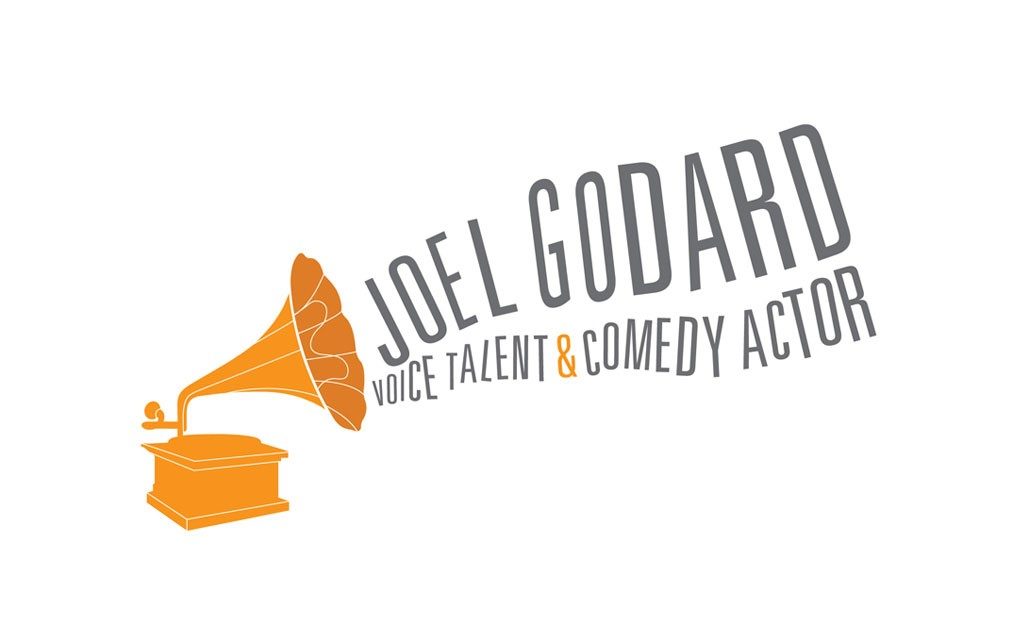
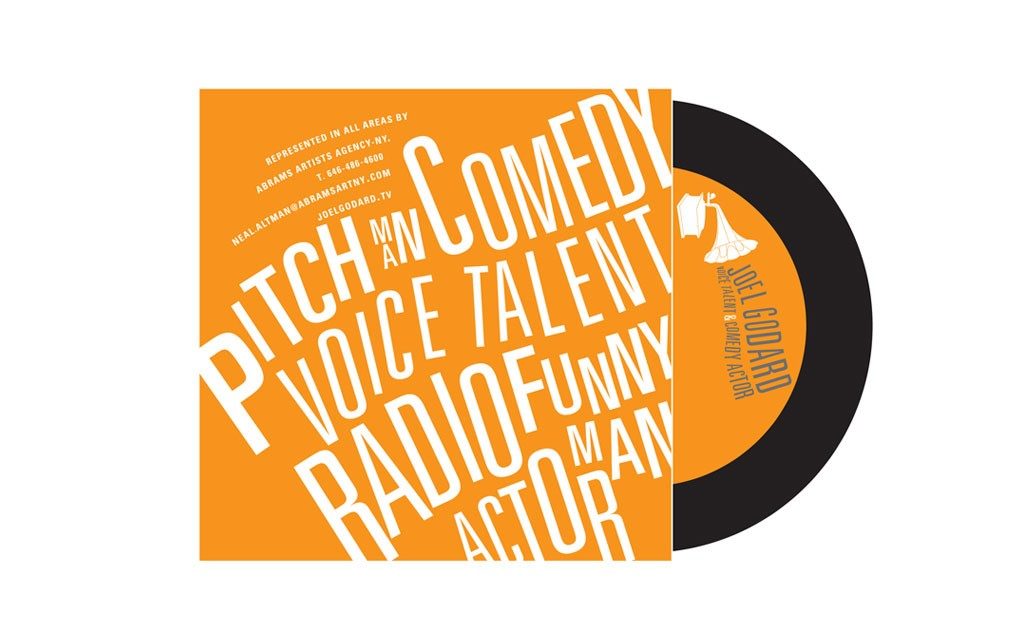
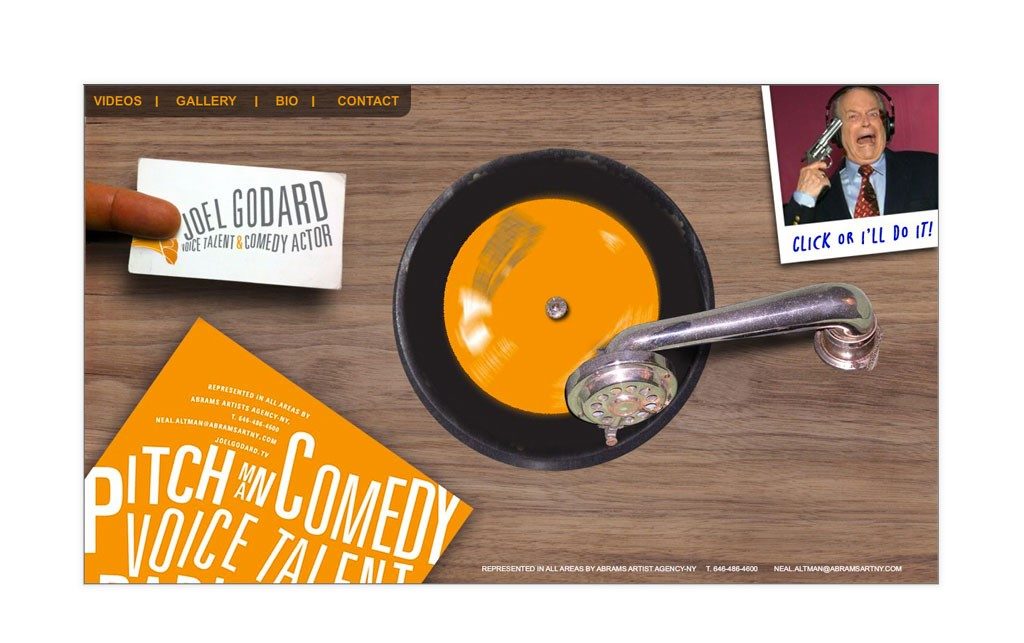
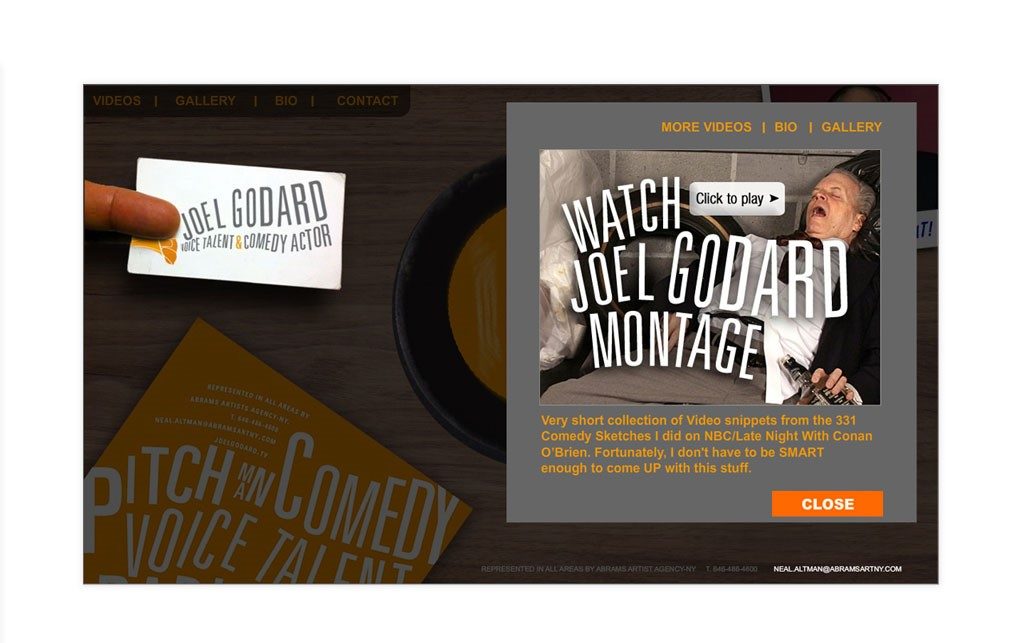
The Logo Creative – What is your favourite Logos of all time?
Douglas Davis – This is hard because I had to choose between my affinity for Joe Duffy, Chermayeff & Geismar, Carbone Smolan and Landor. But the logo that is etched on my heart is the BP sunflower. Sucks that it’s for an oil and gas company but the energy concept using the sunflower and the application is beautiful.
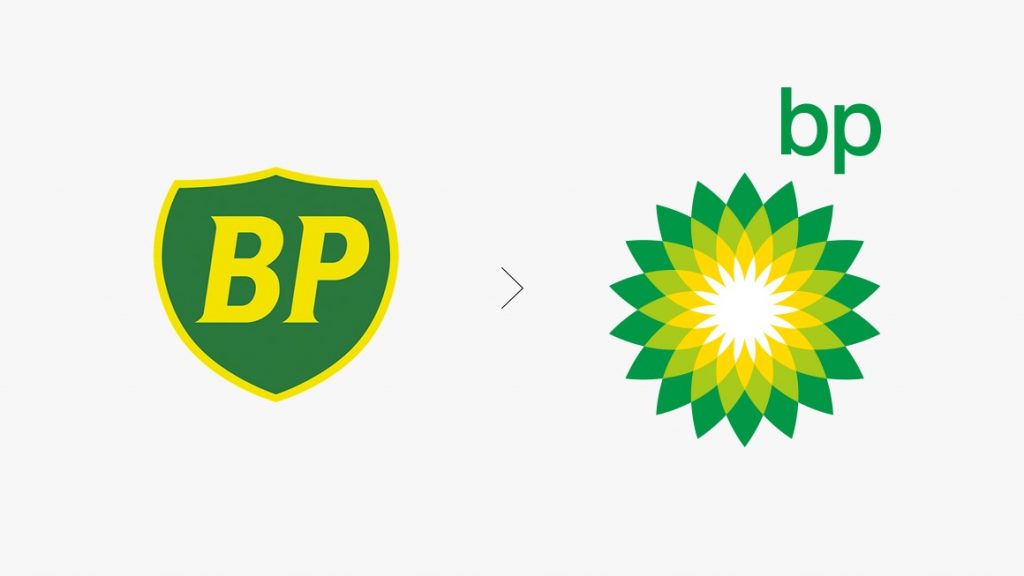
The Logo Creative – Can you describe or give us an overview of your logo design process?
Douglas Davis – My process is simple: Think how they think to do what we do. “They” being the client or whomever I’m trying to differentiate. I do my best to step into the shoes of the decision maker so that I can define the business problem upfront. I cannot proceed without understanding the reason behind the request first. I then get a sense of the competitive landscape the mark must exist in and ask a ton of questions like is this a market leader or challenger, what is the brand’s point of differentiation and positioning? From all this I can articulate the why behind what I’m going to recommend in my graphic exploration.
The Logo Creative – What brands do you most admire and how do they influence your creative thinking?
Douglas Davis – Well right now, the brands that have captured my attention are ones that have personality behind what the brand looks like or does in the world. Examples like Diesel knocking off it’s own brand by opening a bootleg “Deisel store” with its name spelled wrong in an area in New York’s Canal street, an area known for counterfeit goods to kick off it’s new focus on flaws. I love what Burger king has been doing for years now by broadening the focus on just being a challenger to McDonald’s by freshening up the taste test idea with social experiment short films like “Whopper Virgins” or its recent stunt using the Whopper to explain the concept of net neutrality. Or the wit of brands like Geico that have boring logos within industries that are price sensitive because people view insurance as a commodity. Using a cantankerous George Washington Crossing the Delaware turnpike to talk about something you need, but don’t want to pay a lot for breaks through the clutter.
This influences me to zoom out and understand the business, marketing or communication objectives I’m trying to hit in a way that thinks about what the brand looks like, design, as one element within the total spectrum of factors to consider. So I applied this to the way I promote my own services as the designer who understands business and the way I’ve produced video trailers themed according to the content inside the individual chapters of my book. This helps me get specific with communicating the relevance of the content to a particular target vs the generic buy my book message. Here’s a link to the latest promo SLAY inspired by Chapter 14 Dragon Slaying: Successfully Managing Fear.
The Logo Creative – What do you consider your most successful design project, and why?
Douglas Davis – My most successful project was probably when I went from freelancer at an advertising agency to rebranding it in 9 months. This is job creating advertising at an agency as a designer 13 years ago before then I was making digital advertising within an email client software or marketing campaigns for editorial brands. A small specialized agency named Brouillard Communications existed within J.Walter Thompson back then (the group was folded into The Brand Union New York in 2009). I was hired on the HSBC account as a bored freelancer on a global print campaign who loved hanging out with my new co-workers in this new advertising environment. Back then designers could choose whether they wanted to work in web or print and my first job while I was finishing my masters at Pratt were in digital advertising. Everything changed the day someone rushed into the conference room and nervously said, “The client wants a website,” to which I replied, “I know how to do that.” In two weeks I went from the youngest person in the room to director of the new digital arm of the business, hiring my friends as a freelance team (proposal attached, I was so ambitious). Every hardship I had to stay afloat as a freelancer during the dot com recession in 2000, writing my own contracts, leaving follow up messages at potential jobs at 1am so that I was first in the voicemail at 9am so that I could call back on my breaks between folding sweaters at The Gap paid off at that moment. Seeing my logo in the agency lobby, on printed materials and every pitch was awesome. So I’m defining success in terms of going from being bored to boss (digital) in this instance.



The Logo Creative – How long does it take to complete the average logo design project from start to finish?
Douglas Davis – It varies because I spend a lot of time developing the words behind the pictures. I try my best to pitch concepts and action plans so this takes me a bit longer than when I was just making things pretty. Scope, channels and phases factor into my work so my time frame depends.
The Logo Creative – What are you recommended design books to read?
Douglas Davis – Besides my own, Creative Strategy and the Business of Design, I’ll give you three.
Tibor Kalman, Perverse Optimist by Michael Bierut and Peter Hall – Conceptually, his process, his ideas, his execution. Wow. (If you can’t get your hands on one because of price, get Colors: Tibor Kalman Issues 1-13 by Tibor Kalman and Maira Kalman)
Hey Whipple, Squeeze This: The Classic Guide to creating great Ads (5th edition) by Luke Sullivan and Edward Boches – It is just as important that designers learn to write copy, and ideas as create logos because of the increasingly blurry line between creativity, technology and design. Learn from a master.
Pricing Creativity: A Guide to Profit Beyond the Billable Hour By Blair Enns – I’ve spent most of my career freelancing and as I mentioned earlier writing contracts is an invaluable skill that you learn by doing but you’ll need a reference like this.
The Logo Creative – Which software do you use frequently and is there any you would recommend to designers?
Douglas Davis – Nothing fancy in addition to the usual Illustrator, Photoshop, Keynote etc. I did download Adobe Dimension the other day because I’m working on pitching rebrand ideas the Communication Design department i’m teaching in at the foot of the Brooklyn Bridge. They’re moving into a new facility called the Pearl building and I wanted to mock up some environmental graphics that align with the new brand strategy I’m proposing. Beyond that, the program I use most these days to flesh out my concepts and present my ideas is TextEdit.
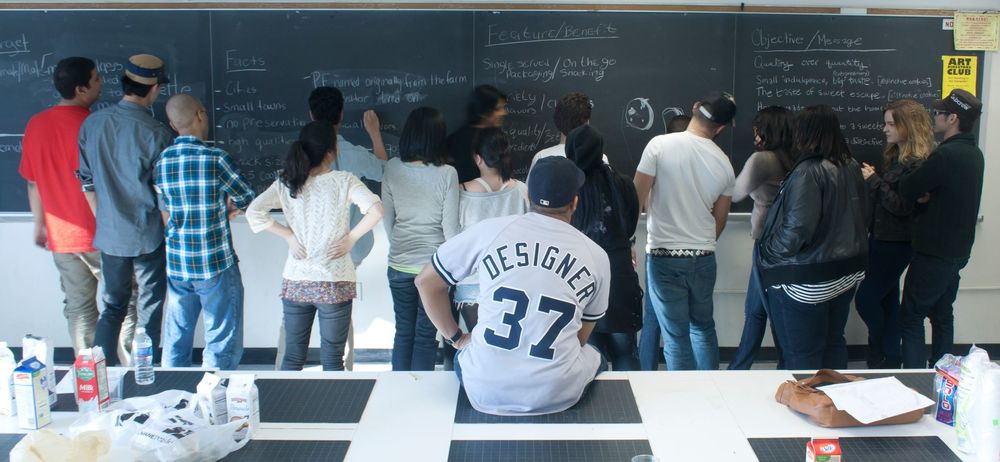
Douglas during a Strategy session complete with custom jersey with his undergrads at the foot of The Brooklyn Bridge in The Communication Design Department at City Tech
The Logo Creative – What is your favourite style of logo design? And why?
Douglas Davis – If it is a typographic solution, then I like the logotype to be custom, somehow reflecting the brand, product or service. I’m into type as image or image as type so in these solutions, there is always room for swapping out a letter for some sort of symbolic representation of the brand or using type to create an image representative of whatever is for sale. The elegance of Spencerian script is a real turn on.
If there is a mark, I really enjoy the relationship between the symbol and the typography. The negative and positive space. This is where I like to pay attention to what the designer chose not to do as much as the deliberate intent of what is. Movement and placement of whether the elements are centred, off centred and how the visual path leads my eye. I love candy.
The Logo Creative – What is your daily inspiration when you design?
Douglas Davis – The exploration. The hunt. The search. Knowing that there is an original or fresh solution that also satisfies the objective if I just turn over every rock, try everything I can think of, wake up and try it again until I’m satisfied. Knowing that the inspiration may be visual or verbal. That is exciting.
The Logo Creative – When you’re not designing do you have a favourite free time activity you like to do?
Douglas Davis – Collecting experiences and stamps in my passport. Often times I don’t remember my dreams and I think it’s because I do my best to walk in them every day. The same wanderlust when I’m looking for a design solution is the same discovery I seek through exploring places and things with people. Nouns.
The Logo Creative – What was the biggest challenge you ever faced on a project?
Douglas Davis – The time I was blindsided in the middle of a presentation when I began to understand that after, the client vetted me, paid me for a viability study, digested it for three weeks (during which there were sixty-four e-mails clarifying the subsequent agreement) and sent a 40 percent deposit to start working, that these guys didn’t read the contract, or recognize or understand anything that they paid me to do. Nightmare (Disaster stories are gold when you write a book by the way. See Chapter 14: Dragon slaying for this and many more stories).
The Logo Creative – In your opinion what’s the best and worst part of your job being a designer?
Douglas Davis – The best part is that we get paid to indulge our OCD on type and color details. The worst part is being promoted often means less creative work in exchange for meetings and administrative work.
The Logo Creative – Who is the most inspiring person to you and why?
Douglas Davis – My neighbour Mr. Andrew Gates. I’ve watched this man solve every problem imaginable from laying bricks, to building houses, restoring cars, designing and installing light fixtures, you name it since I was a little boy. And even now at 91, he still has time to go to fishing with me when I’m visiting my hometown. He’s one of those people you learn from every time you see them and that’s been the case with me my whole life. I value that a great deal. The crazy thing about it is that as a little boy he and his brother hung out with my great-grandfather in the same way.
The Logo Creative – Who is your favourite Graphic Designer and why?
Douglas Davis – Arem Duplessis, I’ve watched his career from his early days at Blaze Magazine (defunct), to GQ, to Spin and the New York Times Magazine before he disappeared into Apple’s spaceship as Creative Director. Just in those titles, his career has spanned audiences interested in Hip Hop, fashion, and music to refined long-form current events. His style is elegant, conceptual and though it sucks that I can’t pick up what he’s doing on the newsstand and ask questions about what typeface he used or pick up the SPD annual and see his name on every page anymore, it was great having him to look up to as a young designer. I respect what and how he does what he does.
The Logo Creative – What’s your favorite design quote or quote in general, and do you have a mantra or saying you live by?
Douglas Davis – Yep. “Practice makes presentable.” This is how I remind myself that I’m not aiming for perfection because that isn’t really possible because perfect is subjective. I’ll do my best. How prepared I am is within my control.
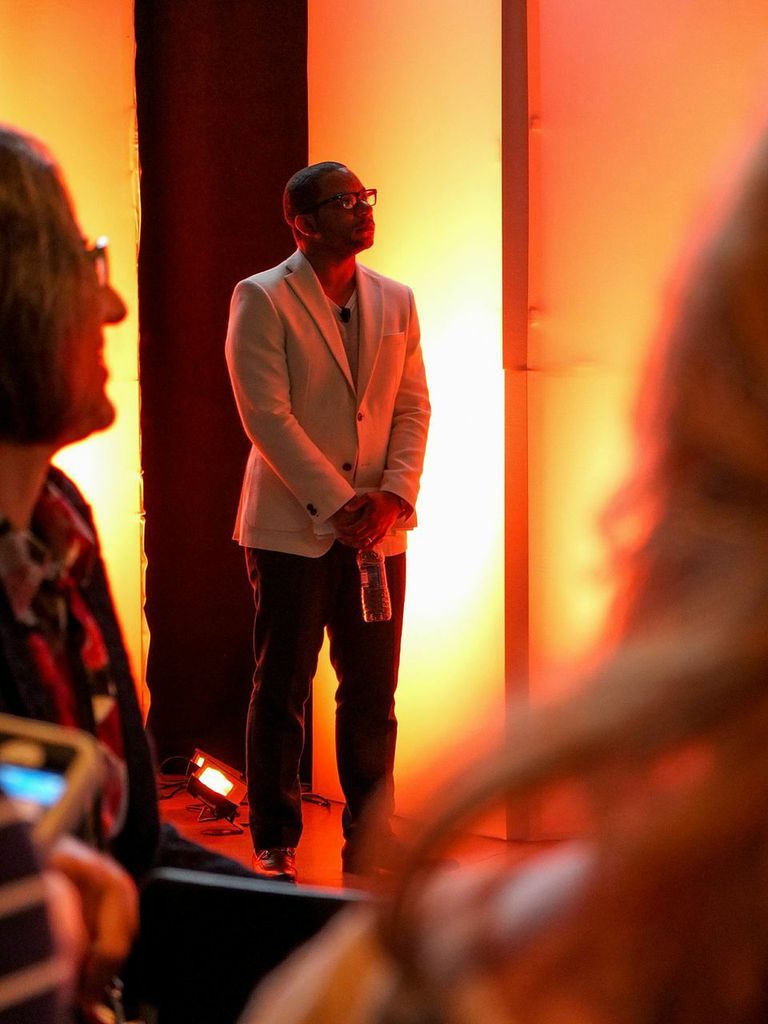
Douglas waiting to go on stage in front of an audience of about 700 at his first conference presentation in Boston at HOW Design LIVE in 2012
The Logo Creative – In less than 10 words what is graphic design?
Douglas Davis – Deliberate intent. A harmony of elements. Creative Business Solutions. Candy.
The Logo Creative – What steps did you take to start your graphic design business? Did you have to make any sacrifices on your journey?
Douglas Davis – The Davis Group LLC exists as a more formal version of my freelance practice after I was awarded my first sizable piece of business. By that time I was married and I realized I should probably evolve.
I got a call one day while sitting in my apartment in Manhattan. A longtime marketer in the business who awarded me a scholarship while I was finishing my second masters in Integrated Marketing at NYU had an assistant who was on the other line. She said, “I’m now a marketing manager for a small but growing employee staffing company and we need a new positioning and identity materials to update our offering. I’d love to get your recommendation on any design firms we could consider to send our request for proposal.” “Absolutely!” I said, as I rattled off the top-tier design and branding firms known around the world but based in New York (Carbone Smolan, Pentagram, Wolff Olins, Landor, Interbrand, FutureBrand, Chermayeff & Geismar). I was completely confident that any one of these could exceed all expectations. I was positive that for a truckload of money, my old friend would be buying the best work the industry had to offer. After finishing my list and just before hanging up the phone, I heard “—and feel free to throw your hat in the ring; I know you do the work we need as well.”
After hanging up the phone, I made some calls, pulled together a crew, created a capabilities presentation of relevant case studies from our previous work, and built a team of people who would work on the business should we win. The client flew up to NY and we pitched in a small rented office in Chelsea. After one more pitch, we were awarded the work. Winning the business couldn’t have gone better. Former co-workers. Talent who had worked on numerous well-known global accounts. Complete confidence in our ability to create a beautiful new identity the client asked for . . . if only we could agree on what the strategic parts were. That’s how my business started no sacrifices, just adventure.
The Logo Creative – Do you have any regrets? Is there anything you would have changed early on in your career?
Douglas Davis – None. I’m grateful that my family spoke about my artistic talent as a gift and as a result though I struggled with alcoholism, I never mixed drinking and my work. Though I’ve made many mistakes, I’m proud of that.
The Logo Creative – If you could go back in time, what would you tell your younger self?
Douglas Davis – Know when to use the “n-word” with clients. Learning how and when to say no is the best way forward for everybody. Trust me.
The Logo Creative – What’s the most important piece of advice you have received as a designer that’s helped you?
Douglas Davis – In class one day at Pratt, my favorite professor and now good friend Tony Dispigna said, “The worst of you will get jobs.” His words echoed from the silence they produced in the room and yet they were ringing in the ears of his twelve graduate students. The faces that weren’t blank contorted while experiencing the five stages of confusion–WTF?!, He’s joking right? Oh, he’s not joking. Wait, is he talking about me? What is he actually saying? Speaking to our fears was the best way of making sure I’d never confuse why I was becoming a designer. So my takeaway was that it’s never about getting a job, it’s about the quality of work I choose to do. And though I can’t say that to my students today because they’re stepping out into a different landscape of templates, and crowdsourcing, the insight still rings true–this work has to be a passion.
The Logo Creative – What would be your advice for new Logo and Graphic Designers?
Douglas Davis – The best advice I can give young designers today was actually from Dr. Marjorie Kalter, my friend and former competitive strategy professor at NYU, she said “If a concept merits innovation, disruption, or change, you can and should be prepared to lead the discussion about why and how it would be feasible. “I love it” is not a compelling rationale for a business decision.”
This helped me understand the reason why I was learning the language spoken on the other side of the brain and it’s the reason they should too.
Additional Question about Creative Strategy and the Business of Design
I wanted to ask Douglas about his book Creative Strategy and the Business of Design
Staying relevant in today’s creative industry is challenging and takes more than creativity alone. Creatives must understand the language of business. The book covers business objectives and marketing decisions that drive creative work, It helps you understand client requests from a business perspective and build a strategic framework to inspire visual concepts. Helping you redesign your portfolio to showcase strategic thinking and winning new business and growing the existing clients. Having the creativity is one thing and this book will teach you the other side of the creative business once you understand what the people across the table are thinking, you’ll be able to think how they think to what we do.
The Logo Creative – What drove you to write the creative strategy and the business of design?
Douglas Davis – I wrote this book as a response to the shifts in the environment that I found myself in as a result of doing my job well. And maybe you’ll relate. When that happens You’re invited to more meetings or you find yourself in a more client facing role, where there’s a different discussion taking place.
At some point, I hit a wall with my ability to justify, my creative or aesthetic decisions, in the context of the business objectives or marketing goals we were trying to achieve. Looking back, I realized that I flat out didn’t have the vocabulary or understanding of how to speak the language of strategy so I fell back on my creative comfort zone. but the problem, as my friend and colleague Dr. Marjorie Kalter puts it, “I love it. Isn’t a compelling business rationale.”
So I lost those battles in the process, and then one day I stumbled into a strategy session.
That was the start of my quest to understand the words behind the pictures or the strategy behind the execution. It was also my introduction to learning the language spoken on the other side of the brain, and even then, after I understood, it took time to become familiar with the tools. At that point, I was on brand but off strategy, or on strategy but off message. and if there’s anything I don’t have to tell you, it’s that regardless of how swamped we are with deadlines, deliverables, and delusion, we are still expected to answer client problems with creativity that is on brand on strategy and on message.
The Logo Creative – You’re passionate about creative strategy. What led to that passion?
Douglas Davis – I am. Survival led to that passion. It’s a losing battle defending design work solely on the basis of aesthetics–you’re misunderstanding why you’re in the room. And whether we understand it or not, we are being asked to solve a business or marketing problem with design. Think about it.
Designers are trained to focus on the tactical parts of what should be larger strategic decisions, and in most cases, without being exposed to what those Strategic considerations are.
So it’s the perfect storm of miscommunication: When clients ask for design but need strategy, designers don’t know strategy because they weren’t taught business, and the in-house MBAs on your team wasn’t taught how to inspire designers.
So the formal education most of us had that qualifies us to be on the same team servicing our clients didn’t equip us to talk to each other. So when we lose the account because the client expects everyone involved with their brand to be strategic, it doesn’t matter who’s fault it is, we lost the account. And that’s the communication gap.
The Logo Creative – What was the experience like of writing a book? What could a new author expect if writing a book?
Douglas Davis – If the new author is a designer, he or she will need to understand that they should be concerned with the value in the words first. Sounds simple, but it will be the hardest thing to do besides making sure that what you understand in your head is communicated clearly to people who are not.
The Logo Creative – What you talk about in the book, is this what you teach your college students?
Douglas Davis – Yep and what I use to serve clients. I drink my own Kool-aid.
The Logo Creative – What makes a great logo? An excellent identity system?
Douglas Davis – Clients approach us with various forms of the exact same request: Increase my sales, reposition my brand, expand my customer base. It’s all the same ask: Solve my problem. An excellent identity system or great logo does that.
The Logo Creative – How do the best designers go about building trust with clients?
Douglas Davis – I think businesses are repositioning themselves through design and Designers provide the spoon full of sugar that make marketing and business Objectives palatable to the public. We are in a unique position but we learn a different vocabulary because we’re speaking different languages.
Bridge the gap, RE-TRAIN the way you listen, learn the language of business spoken on the other side of the brain. That’s how you’ll build trust.
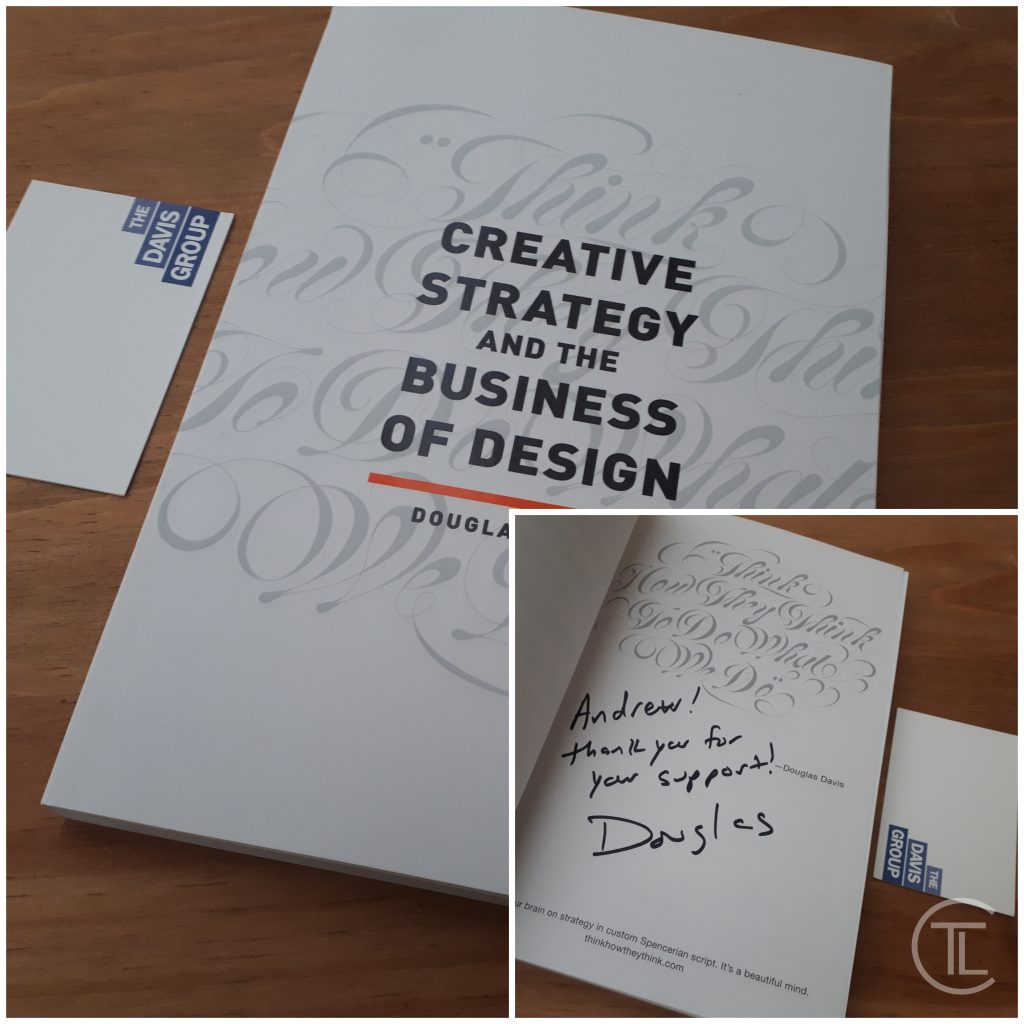
I would personally like to thank Douglas for sending me a signed copy of the book, it was a nice gesture and a book i will treasure. Andrew
learn more about Douglas Davis | DouglasDavis.com

